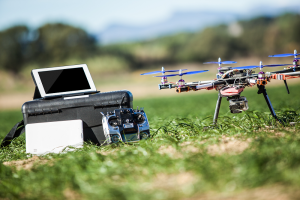As with anything, there are cons and pros to buying a drone with integrated camera support. The pros for buying a drone with an integrated camera include: Ease of use: A drone with an integrated camera doesn’t require much setup or configuring beyond charging batteries and plugging in a storage device like a Universal Serial Bus drive or memory card. Flight specific filming features: Drones with integrated cameras usually feature advanced features like video streaming to mobile devices and recording to remote storage. This is very helpful for viewing what you are shooting as you shoot it.
In addition, you can record the streaming video footage to remote storage  so that you can back up the movie while you film it to defend against failures on your storage media. Support: Support for your drone means support for your camera. This might seem like a small thing, but its one less call and one less warranty you’ve to cope with. The cons of buying a drone with an integrated camera include: Camera quality: Drone companies build drones, not cameras.
so that you can back up the movie while you film it to defend against failures on your storage media. Support: Support for your drone means support for your camera. This might seem like a small thing, but its one less call and one less warranty you’ve to cope with. The cons of buying a drone with an integrated camera include: Camera quality: Drone companies build drones, not cameras.
Consequently, integrated cameras are usually an afterthought and lack the power of an additional camera of a reputable brand. Custom features: Integrated cameras have a tendency to lack custom features and controls which are typical of an add-on camera, like manual image adjustment modes, recording modes, and frame rates. Battery life: Integrated cameras typically feed off of the main battery. Adding additional batteries will add additional weight and therefore reduce fly times. Integrated camera features – When making a decision on a drone with an integrated camera, there’ll be several different features that you should consider. These features include: Sensor size: Digital cameras have an internal sensor that captures light info and after that translates that info into data to make your picture file.
As it goes, the bigger the sensor, the better the image since the more light it can gather. Small cameras will always have small censors. Lens: The camera lens is nearly as important as the sensor size. It is since the lens is accountable for focusing and directing light into the sensor. The size and shape of the lens will greatly affect image quality, almost just as much as the sensor size. Resolution: In video, the resolution is the number of dots that may be squeezed into the video image. You may think of resolution with regards to your TV since the quality of your TV is typically measured by its resolution.
A TV that’s hi-def has a resolution of at least 1280 7 2 0. Which means 720 pixels vertically and 1280 pixels horizontally make up the image on the screen. Sample hi-def resolutions include 720i, 720p, 1080 i, 1080 p. Ultra definition is an image that’s bigger than 1080 p. Frame rate: The number of times a camera may take a picture in a second is frame rate.